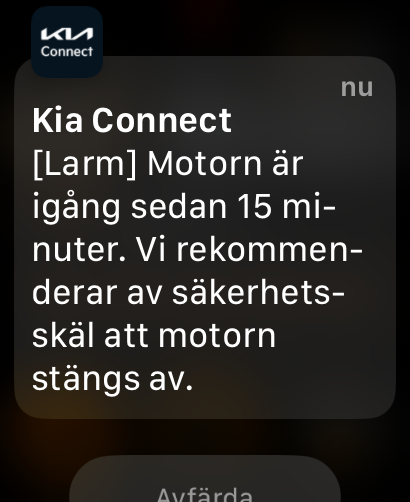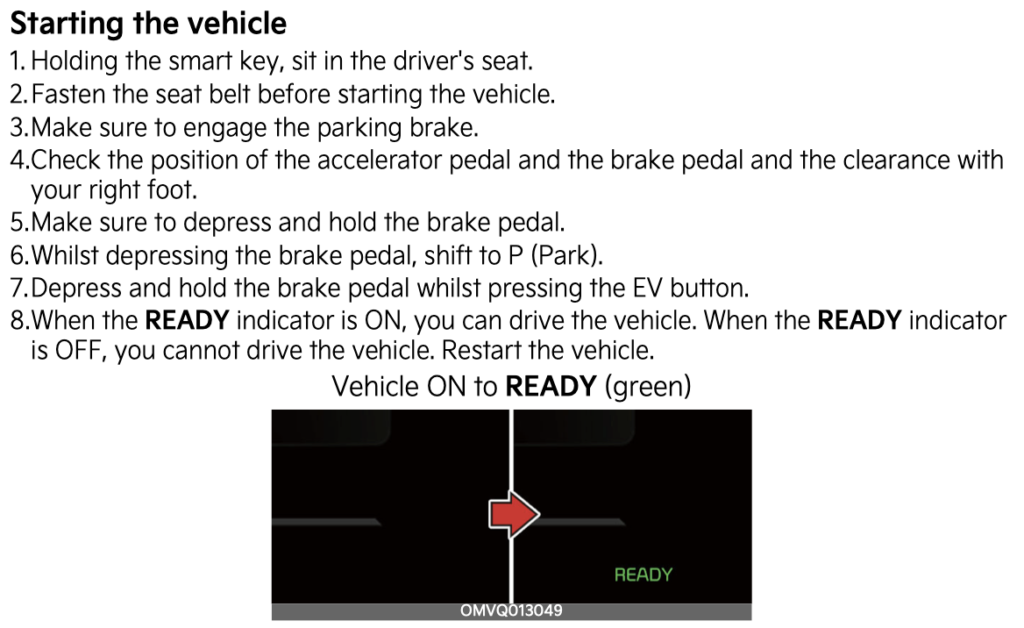Tesla Model 3 come back, everything is forgiven. Not really, but also not NOT really. The Tesla, with all its quirky faults and strange quality issues (as partially covered in my exit interview), has spoiled my wife and me.
The EV9 is not only the EV car of the year of 2024 but also THE car of the year 2024. Those are some high praises. In many respects I can see why, but our anecdotal experience with this car leaves us more frustrated than impressed. The big problem is we’ve seen and lived the future. And while this is marketed as a car of the future, it’s rooted in the past in a way that the Tesla was never.
Let’s get the good out of the way first: The EV9 is an incredibly well built, comfortable and quiet car. I think it looks great and it’s roomy like no car I’ve ever owned. Those are all physical aspects. Basically, you can tell Kia has been building cars for some time. But a tech company they are not.
Let’s start with the future part. In a Tesla, you set up your profiles, connect them to key cards or your phones. The procedure then is this: you approach the car, it unlocks itself, you get in, put it in Drive, and drive away. Then you put it in park, exit the car and leave, and it locks itself. Fairly straight forward, it takes care of the unlocking and locking, turning the car on and off automatically. With the EV9, not so much.
The car will unlock on approach, but not lock when you leave. Once in the car, you need to turn it on, and when you leave, you need to turn it off manually. If you forget to turn it off, you can’t lock it. And from the outside there’s no way to turn it off, from either key fob, phone key or the Kia app. Speaking of, you have two key fobs and you can use your phone as a key. However, you can only have two profiles, plus a guest mode, and one phone key. You can share your phone key, but not by actually sharing it. The intent has to come from someone else. They need to set up the whole Kia account first, then request access to your vehicle, then you can share it. Weird.
There are so many peculiar limitations and unnecessary steps. Be prepared for the wonderful push notification telling you that you left your car engine running and just hope you’re not getting it while boarding a plane or something, since it means your car will be left on and unlocked and there’s nothing you can do about it without physical access to the car.

Two profiles, that’s such an unnecessary software limitation that creates a really poor experience for any owner where more than two drives it. Any additional driver will need to rely on the guest mode, but it’s also really easy to accidentally select one of the two profiles and mess up their settings, since the car will auto select a profile if no manual input is made. A profile can be protected with a PIN code and biometric fingerprint security to prevent this. But since the screen is so far away, it’s not very comfortable (and also quite slow and sluggish) or easy to enter a pin every time you get into the car so you might be swayed to use the fingerprint sensor. Bad news then that this sensor is really unreliable, inconsistently unreliable even. You get half a dozen tries before it locks up and asks you to use your PIN instead. I think my success rate here is about 50 %. That’s just not good enough, so I leave it off.
To prevent my seat settings from being ruined, I can use the seat memory settings (of which there are two). This way, if someone accidentally change my seat while using my unprotected profile, I can rely on the second memory to restore settings. But the documentation for these buttons are poor, and it’s only by trial and error that I’ve learned how they relate to profile settings.
When interfaces aren’t intuitive, one would hope the manual could be a great resource. However, the EV9 manual is a complicated mess that is incredibly difficult to follow. A great example of this is the very first time I wanted to use the car. I was able to turn the car on, but unable to put it in Drive or Reverse. I was trying to do it the way the rep had told me. No matter what I did, I couldn’t get the car to move. So I went for the manual. How to start the car is explained in this simple 8 step guide:

Most things are likely covered in the manual, but those are 650 bitter pages to wade through even navigating by search. I’ve resorted to YouTube for learning things about this car, which has proven more effective.
From YouTube, I’ve learned that there’s no button to pause media, only a mute button. But the EV9 in the US, the button is pause for media and mute for radio, which makes much more sense. “Can’t you use the on-screen controls to pause?” I could, if they were accessible. However, since the car insists on auto-playing audio no matter how you configure it or your (in my case) iPhone, the need for this button is immediate from the moment you start the car. But there’s the slow profile selector that you can’t dismiss. Once profile is selected, you’re greeted and told to drive carefully, which you can’t dismiss, and since you’re leaving, the car is in park mode with all the cameras, which you can’t dismiss. So you and everyone in the car will have to hear whatever the car chooses to turn on (sometimes it’s music, sometimes it’s podcasts, I’ve found no consistency in how it behaves), until you’ve been able to login, pull out and drive away. It’s not nice. Since writing this post, I’ve learned that the infotainment system’s on/off button works as a media play/pause button when pressed. It only works as on and off with long press. Things you learn by accident.
The app is difficult to use. So many views and settings that are grouped and presented in different ways. It’s hard to figure out the information architecture of it. I can mention that the app will not let you open the trunk or frunk, it can’t tell the temperature in the car, it can’t be used to share locations from a map app (only the built-in one), it can take minutes for settings to change, the charge speed is oddly presented in percentages, and each event triggers a notification (even successful ones). But the main problem is that you’re always lost. There’s hardly no visual hierarchy, it’s all 50 shades of light gray and five times too many menus and sections that all feel awkwardly squeezed in. I get the feeling this app initially did very little and now it is responsible for a whole lot, but there wasn’t enough time or effort spent on making sure the app.
Luckily my home and life situation affords the ability to charge at home. In fact, I’ve not charged the car anywhere else than at home since getting it four months ago. Which is good, since the car offers no entertainment features beyond playing music. No Netflix, no games, no nothing. There is no way to stream anything on this system while waiting to charge. What you can do is record voice notes, which is a weird car feature. Browsing AliExpress or similar gives you the opportunity to buy wacky computery dongles that you can plug in to get Netflix and other services. So there is a way, but it’s not very elegant.
At some point I need to wrap this post up. It’s hard, I keep finding new annoyances. So I’ll just finish with this baffling thing:
There is one pedal drive, confusingly named i-Pedal. Then there are a couple of levels of regenerative settings, all the way down to free rolling (Level 0). All things related to this is controlled with paddles behind the steering wheel. It’s all they do, navigate up and down among these settings. Long press and it will set regen to auto, in which it does something automatically, but I haven’t figured out what. Here’s the weird thing. When you start the car, it always defaults to Level 3. So if you prefer any other setting, instead of saving it to your profile, you’ll have to set it manually each time. However, if you prefer auto mode, you can toggle to that and THAT is saved to the profile. No other regen setting is. For someone like me, coming from a Tesla, I’m very used to and prefer one pedal driving, I kept toggling it on every time for a few weeks, but finally gave up. There are so many settings to do each time I get into the car, that I simply accepted defeat and got used to the default setting. Perhaps a good thing, because it also turns out that one pedal driving, which has maximum of regenerative breaking, which one would assume is the most economical mode to drive, is in fact not so. In one-pedal drive mode, unlike all other levels, the 4WD is permanent, meaning both front and back motors are engaged. Not sure why it has to be like this, but something tells me whatever I make up from max regen on one pedal drive is more than lost on always on 4WD.
Building cars is hard. Writing software and designing for cars is hard too, I’ve actually worked with interface design for cars (or HMI, as they prefer to call it) for Lynk & Co, so I have first hand experience of how hard it is.
But you got to nail the fundamentals. User centric product design revolves around the user needs and what they value. So much about the software experience in this car only makes sense in isolation at best, but as part of a whole, it falls hopefully short of feeling like anything else than the very first stumbling step into the future. I’m loving the boldness of Kia in designing the hardware aspect of this car. At it’s core its the hardware that takes you from A to B. But the actual experience of that movement goes well beyond the physical aspects of a vehicle, it’s the sum of all parts. In the EV9, there are just too many parts missing or faulty.
Oh, did I mention the Home button on the dash doesn’t actually take you to the home screen? Things like that.
Leave a Reply
You must be logged in to post a comment.